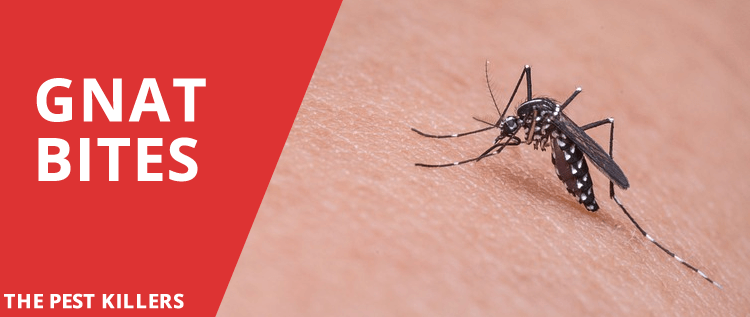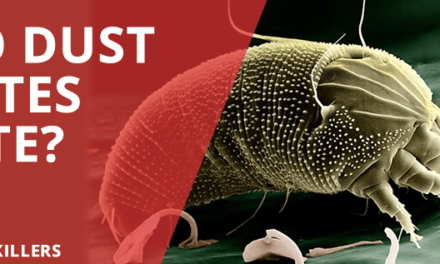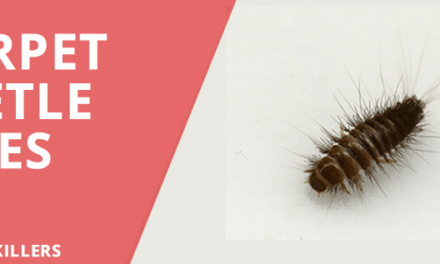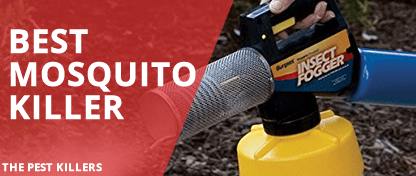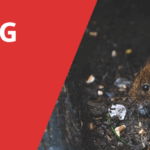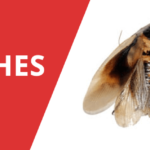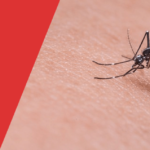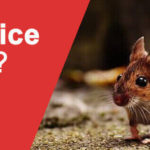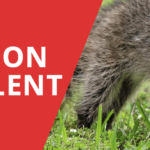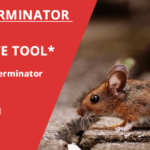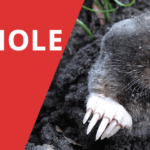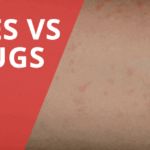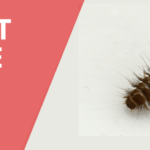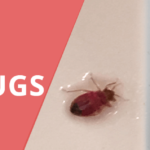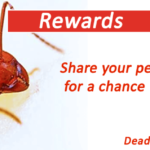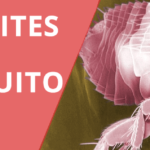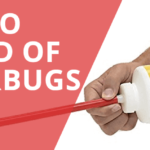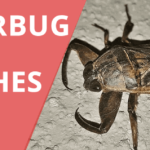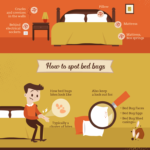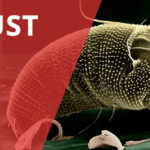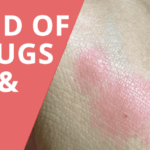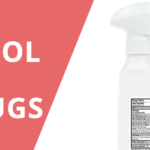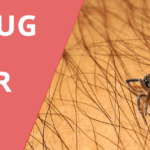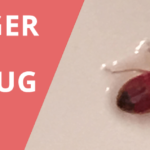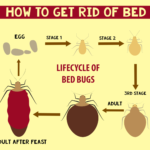What are gnat bites? … Most importantly, what are gnats?
Gnats are the tiny flies that appear in large numbers, particularly at dawn and dusk. Known commonly as biting midges, gnats are closely related to mosquitos. Wherever there is damp soil or a body of water, you are bound to find gnats. Generally, gnats are quite annoying as they get in your eyes, mouth, and face. Plus, female gnats tend to bite to get protein for reproduction.
Gnat Bites
 Gnats are the tiny flies that appear in large numbers, particularly at dawn and dusk. Known commonly as biting midges, gnats are closely related to mosquitos. Wherever there is damp soil or a body of water, you are bound to find gnats. Generally, gnats are quite annoying as they get in your eyes, mouth, and face. Plus, female gnats tend to bite to get protein for reproduction.
Gnats are the tiny flies that appear in large numbers, particularly at dawn and dusk. Known commonly as biting midges, gnats are closely related to mosquitos. Wherever there is damp soil or a body of water, you are bound to find gnats. Generally, gnats are quite annoying as they get in your eyes, mouth, and face. Plus, female gnats tend to bite to get protein for reproduction.
What are gnats?
 Gnats are the members of diverse species of annoying pests which constitute the Mycetophilidae, Anisopodidae, and Sciaridae families of insect nomenclature. Gnats have a fine resemblance with mosquitoes; however, most gnat species are not linked with any potential disease. They are attracted to damp places such as rivers, streams, damp soil, rotten fruits and vegetables, decaying matter, garbage, and sewage. They breed in large mating swarms and comprise of biting as well as non-biting species.
Gnats are the members of diverse species of annoying pests which constitute the Mycetophilidae, Anisopodidae, and Sciaridae families of insect nomenclature. Gnats have a fine resemblance with mosquitoes; however, most gnat species are not linked with any potential disease. They are attracted to damp places such as rivers, streams, damp soil, rotten fruits and vegetables, decaying matter, garbage, and sewage. They breed in large mating swarms and comprise of biting as well as non-biting species.
By appearance, gnats are often mistaken for mosquitoes. You will often find them flying in swarms for mating purposes. Adult gnats often have a hump-shaped back which makes it easy to differentiate gnats from mosquitos. Biting gnats also have a proboscis which they use to bite while non-biting gnats don’t have a proboscis.
• Habitat
Gnats breed in summers at a much higher rate due to the moist and damp atmospheric conditions. They are generally found on soils, fungi, fruits, and vegetables. They can be found feeding on decaying matter, plants, other insects, or even on blood. Once again, the preferred habitat of a gnat depends on the species it belongs to which is why some species prefer the decomposing food in garbage bins while others are attracted to the soil of houseplants.
• Lifecycle
Gnats have a shorter lifecycle of 2 – 3 weeks, which includes 4 stages, just like other insects: egg, larva, pupa, and adult. When the males and females mate in the swarm, females lay the eggs in water, mud or soil. Eggs hatch into larvae in the presence of the required optimum environment. The gnats at the larval stage are known to be maggots. Maggots grow into pupae, which further develop into adults that lay eggs and undergo the same stages of the lifecycle.
Do gnats bite?
 Considering the feeding habits, gnats are divided into two categories; biting and non-biting. However, they do not sting. Male gnats do not bite as they do not reproduce; they just feed on plant sap and nectar. Meanwhile, female gnats suck blood in order to get energized to lay up to 400 eggs over the next few days. Furthermore, they require the blood protein to accelerate their reproduction process. Carbon dioxide, perspiration, and dark colored objects stimulate their prey-hunting process which is why they try to get in our mouth and nose.
Considering the feeding habits, gnats are divided into two categories; biting and non-biting. However, they do not sting. Male gnats do not bite as they do not reproduce; they just feed on plant sap and nectar. Meanwhile, female gnats suck blood in order to get energized to lay up to 400 eggs over the next few days. Furthermore, they require the blood protein to accelerate their reproduction process. Carbon dioxide, perspiration, and dark colored objects stimulate their prey-hunting process which is why they try to get in our mouth and nose.
Gnats usually prey for human or livestock blood, biting them on the face, arms, feet or any other uncovered or exposed area of skin.
| Black Gnats | Eye Gnats | Sand Gnats | Fungus Gnats | |
|---|---|---|---|---|
| Do they bite | Yes | No | Yes | No |
| Appearance | Shiny greyish -black body, wings lacking scales, and short legs | Shiny dark brown bodies with orange-brownish legs | Yellow to reddish brown body color with hairy V-shaped wings | Blackish or greyish body, segmented antennae, and Y - shaped wings |
| Size | 2 – 5 mm long | 1.5 – 3.5 mm long | 1.5 – 5 mm long | 2 – 5 mm long |
| Habitat | Lakes or streams, mud | Grass, sandy, many habitats | Sand, lagoons, swamps | Mushrooms and plants |
Do gnat bites transmit diseases?
 Gnats are most often considered a nuisance since they are annoying and can damage homes too. However, gnats also pose a threat to human health as they transport pathogens from their development sites. For instance, fruit flies tend to contaminate food while fungus gnats harm potted plants and make them a developmental site where they multiply and create an unclean environment.
Gnats are most often considered a nuisance since they are annoying and can damage homes too. However, gnats also pose a threat to human health as they transport pathogens from their development sites. For instance, fruit flies tend to contaminate food while fungus gnats harm potted plants and make them a developmental site where they multiply and create an unclean environment.
The female of some of the species like the black gnat feed on blood. As a result, they are known to carry parasites and spread various diseases including river blindness to livestock and humans.
Types of gnats
As mentioned earlier, the gnat is a broad term which encompasses various kinds of flies. Following are a few types of gnats.
Symptoms of gnat bite
 When the gnats bite, they don’t break the skin as fleas and mosquitoes do. Instead, they used a body part names cutters present in their mouth to slice your skin. The slice then provides them access to your blood which they survive on. Some types of gnats also inject an anti-clotting agent when they slice open the skin. As a result, your wound doesn’t clot quickly, and gnats enjoy an uninterrupted meal.
When the gnats bite, they don’t break the skin as fleas and mosquitoes do. Instead, they used a body part names cutters present in their mouth to slice your skin. The slice then provides them access to your blood which they survive on. Some types of gnats also inject an anti-clotting agent when they slice open the skin. As a result, your wound doesn’t clot quickly, and gnats enjoy an uninterrupted meal.
Gnat bites are small and resemble a simple pinprick. In fact, some people might even notice a small red spot at the bite site. You will commonly notice swelling around the bite which results in skin irritation. Plus, if the bite is infected, then it might swell larger and even contain pus.
Some people are also allergic to gnat bites. As a result, they can experience extreme swelling and life-threatening symptoms.
Typically, gnat bites are quite itchy. However, most people experience a painful sensation instead of an itching one. As the bite starts to swell, the itching gets more intense. Due to scratching, gnat bites become easily infected which only intensifies swelling.
Other symptoms of gnat bites include nausea, high fever, the appearance of blood in the bitten area, and difficulty in breathing.
Treatment
 Gnat bites can be treated by using the following safety measures:
Gnat bites can be treated by using the following safety measures:
• Wash your skin
Wash the infected area with soap to alleviate itching. Since biting gnats use razor-sharp blades to tear your skin, they leave behind a small, open wound. Therefore, you need to clean the area on and around the bitten part using water or mild soap. Then, using a paper towel or washcloth, you can remove the excess moisture.
• Use antiseptics to disinfect bitten areas
Gnats are known to carry bacteria from different things like rotten food. Thus, you must ensure that you thoroughly swab the bitten area with a cotton ball dipped in antiseptic. You can also tape the cotton to the wound so that the antiseptic soaks into the wound.
Antiseptics like Dettol, hydrogen peroxide, alcohol, and iodine are ideal for wound cleaning.
• Get pain relief
Anti-itch ointments are a great way to attain immediate relief. These include creams and lotions like hydrocortisone creams and calamine lotion. These ointments contain soothing ingredients like aloe, oat complex, hydrocortisone, and vitamin E.
If pain persists, consult your doctor for a painkiller. In case of an emergency like puss initiation from the wound, abnormal swelling or severe allergic reaction, visit your doctor.
Natural remedies for gnat bites

Home-based natural remedies or medications come handy, especially in emergency situations. They have the best effect without any side effects or further reactions, significantly healing the gnat bitten areas. Some effective natural remedies you can use for gnat bites are:
How to prevent gnat bites?
Direct contact with gnats can be eliminated by using the following safety strategies:
• Get rid of dirty dishes and food particles

Environmental hygiene and regular trash management are important to keep gnats at bay. Since gnats breed in standing water or decaying food, you need to treat, dump or drain out the said things to minimize the possibility of gnat exposure.
Store your fruits in the refrigerator rather than placing it on the dining table or kitchen counters. Remember, gnats are highly attracted to food items that are present in open containers as well as to dirty dishes that are left in the skin. Therefore, make sure you keep the countertops washed and dried and ensure that the dishes are put away. In this way, you can avoid colonies of gnats.
• Use gnat repellents and traps

Gnats are most active at dawn and dusk, so it is better to avoid unnecessary outdoor activities at these times. Seal off any unnecessary openings in your house that lead to the entry of gnats. Gnats are more likely to be found in damp areas, therefore, ensure an adequate supply of sunshine at your house.
Insecticides and pesticides should be sprayed to your home plants to relieve them of gnat attacks. Use chemical based repellents to keep gnats away. DEET-based or Picaridin-based gnat repellents are ideal to use.
Grow gnat repellent plants like Geranium flowers, lemon thyme, lavender or Mexican marigolds that have strong natural scents to prevent gnats from attacking.
Use of nets is a short-term but handy solution to prevent gnat bites. Alternatively, you can also install gnat traps at your house. Different sized sticky traps or tapes can also be used to prevent the build-up of gnats.
• Remove standing water

Gnats tend to collect in places where there is standing water. Once you pinpoint the source of gnats, you can prevent them from swarming and breeding, thus reducing the chances of being bitten.
Remove the gardening items that collect rainwater like flowerpots and buckets. Make sure you eliminate all storm drains and clogged gutters as they attract gnats. Lastly, make sure you cover the swimming pool, if you have one, with a large tarp or a pool cover when it is not in use.

